10 Beautiful Houseplants You Can Actually Eat
Bringing greenery into your home not only adds beauty but also brings the joy of growing your own food. Many houseplants are edible, offering you fresh herbs, vegetables, and even fruits right from your living room. Whether you have a green thumb or are just starting out, these plants are easy to care for and can enhance any space. The best part is that they can be used in your cooking, adding flavor and freshness to your meals.
This post may contain affiliate links, which helps keep this content free. Please read our disclosure for more info.
Basil
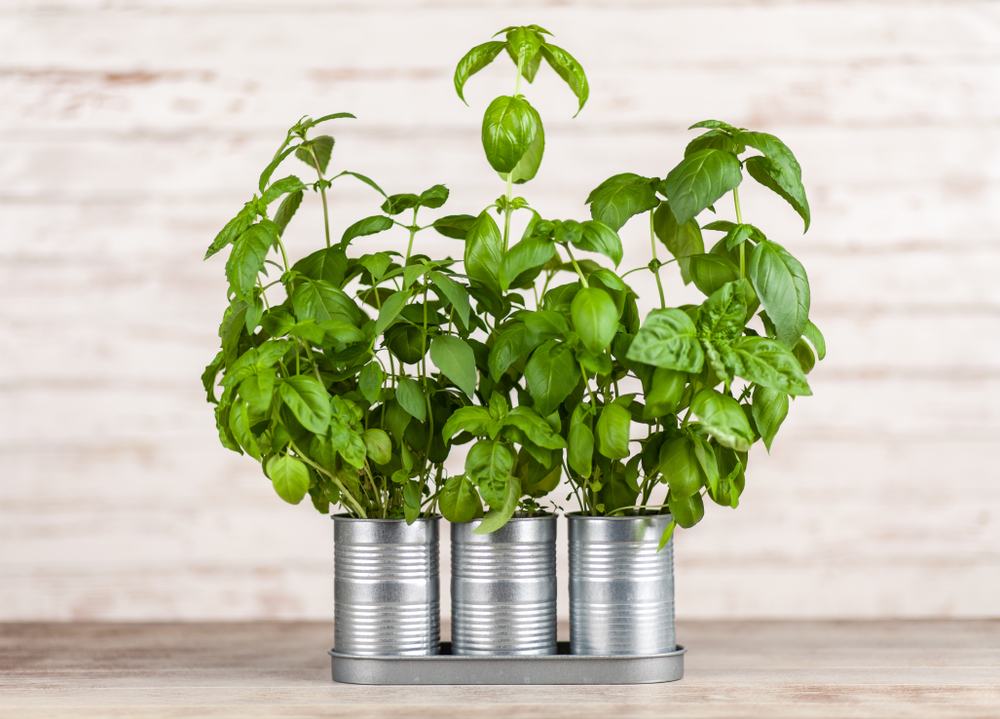
Basil is a popular herb that thrives indoors with plenty of sunlight. It grows well in a small pot on a sunny windowsill, making it easy to care for. This aromatic herb adds a fresh, flavorful punch to a variety of dishes, including pasta, salads, and even pizzas. Regular harvesting of its leaves will encourage the plant to continue producing.
Basil prefers warm environments and needs to be watered consistently, but not overly so. It is essential to allow the soil to dry slightly between waterings to prevent root rot. This herb can be grown from seeds or small plants, and it can also be propagated through cuttings. The aromatic leaves not only taste great but also help brighten up any room.
Mint
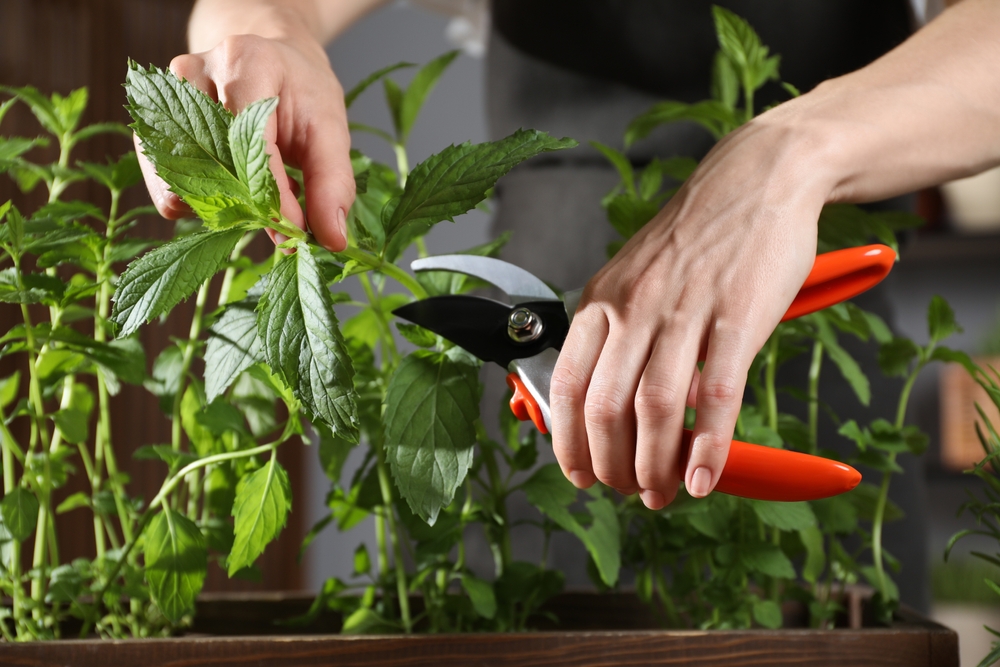
Mint is a versatile and fragrant herb that is easy to grow indoors. It thrives in a pot, allowing you to harvest fresh leaves whenever needed for tea, desserts, or savory dishes. The plant enjoys partial sunlight and prefers slightly moist soil, making it simple to care for. Mint’s pleasant scent adds to its charm and makes it a great choice for any home.
Due to its vigorous growth, it is often best to grow mint in a separate pot to prevent it from overtaking other plants. Mint can be harvested by snipping the leaves from the top, which encourages the plant to grow bushier. This herb is perfect for adding to drinks, making it a refreshing addition to your indoor garden. It is also known for its soothing properties.
Thyme
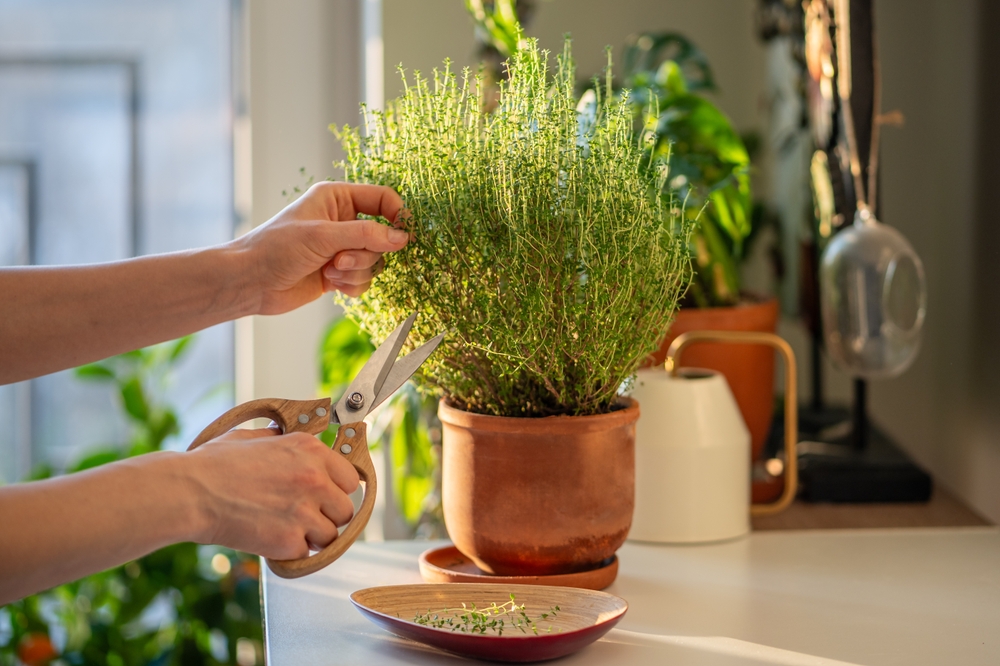
Thyme is a hardy, fragrant herb that is perfect for growing indoors. It enjoys bright light and well-drained soil, making it ideal for a sunny spot on your windowsill. Thyme is often used in cooking for its robust flavor, particularly in Mediterranean dishes. This plant requires little maintenance, making it a great choice for beginner gardeners.
This herb can withstand dry conditions, so it is important to avoid over-watering. Pruning the stems regularly will encourage new growth and keep the plant from becoming leggy. Thyme pairs well with many savory dishes, from stews to roasted vegetables, and even adds flavor to your homemade bread. Its compact size makes it an excellent choice for small spaces.
Parsley
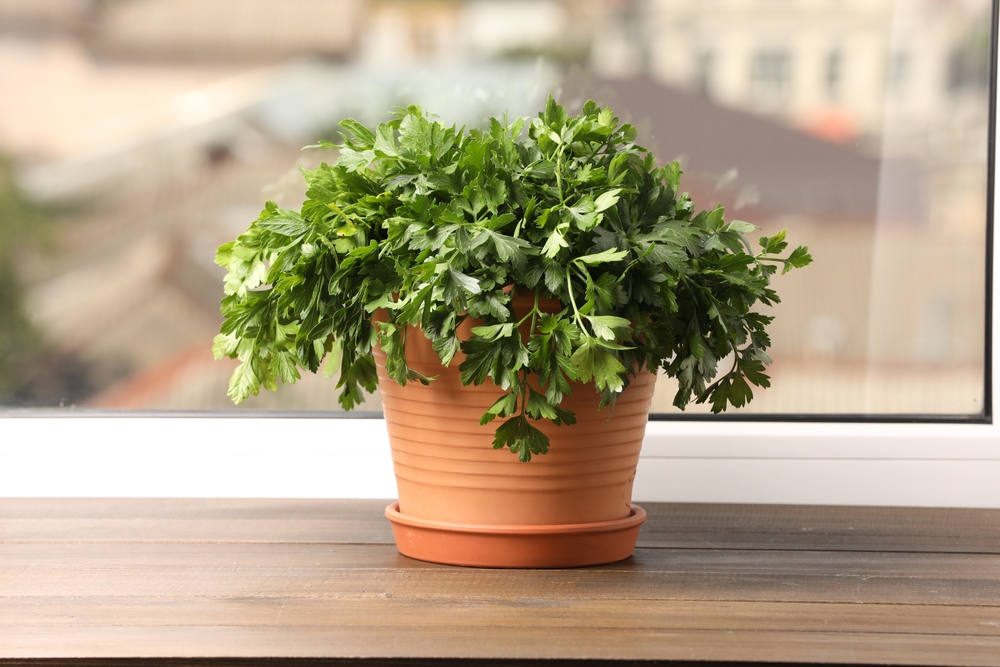
Parsley is a well-loved herb that brings a burst of color to your indoor garden. Known for its fresh, grassy flavor, it is a versatile ingredient in many cuisines. This plant thrives in indirect light and needs to be watered regularly. With its bright green leaves, parsley adds both beauty and utility to your home.
Parsley requires a little patience to grow from seeds but is well worth the wait. It prefers moist, well-drained soil and will need consistent watering to keep the leaves fresh. You can harvest the outer leaves while allowing the inner leaves to continue growing. This herb is often used as a garnish or in fresh salads, making it a must-have in any kitchen.
Chives
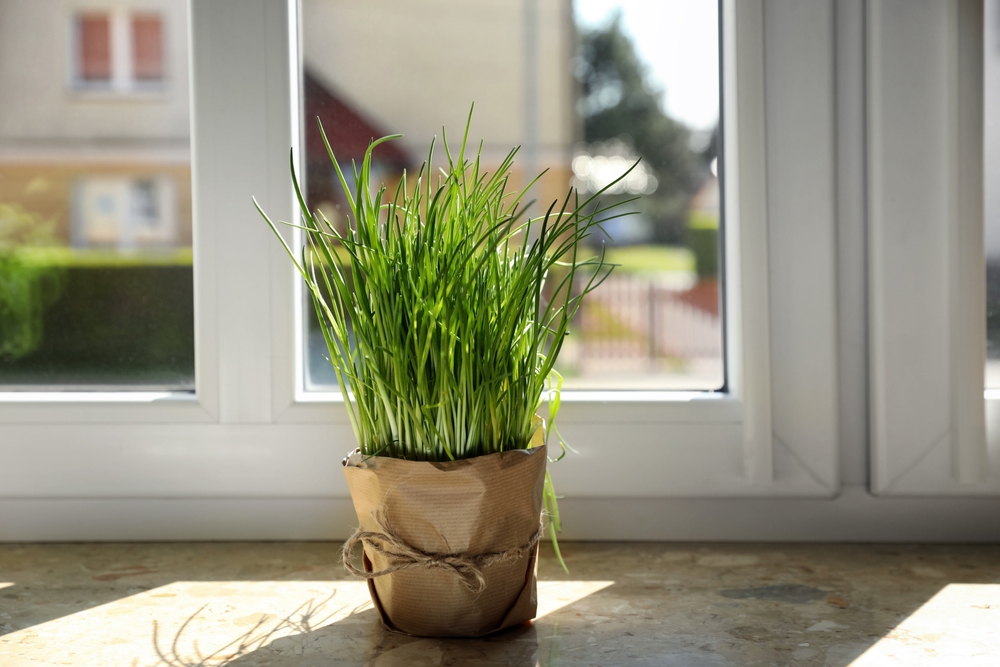
Chives are a popular herb for indoor gardens due to their mild onion flavor. They grow well in pots and require a spot with plenty of sunlight. Chives are a great addition to a variety of dishes, including soups, omelets, and potato salads. Their bright green stems also make them an attractive addition to any kitchen.
Chives are hardy plants that need to be watered consistently but should not sit in water. They are easy to grow from seeds and will thrive in a small container. You can snip the stems with scissors, which will encourage the plant to grow back thicker. Chives are perfect for those who want an easy-to-care-for herb that adds a bit of flavor to their meals.
Cilantro
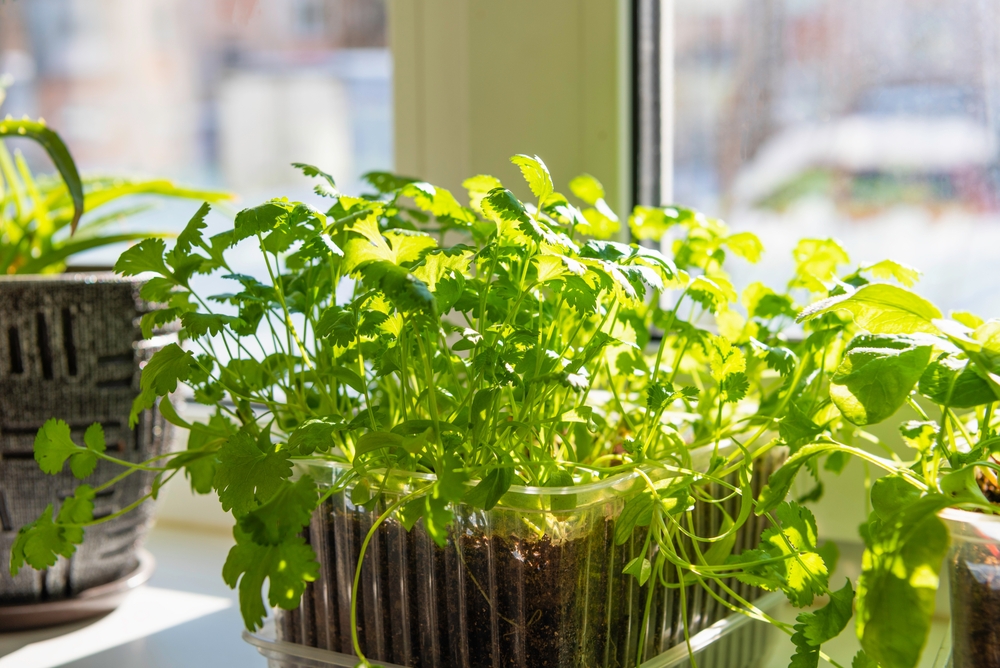
Cilantro is a flavorful herb that adds a unique taste to many dishes, particularly in Mexican and Asian cuisines. It enjoys moderate sunlight and can grow well in containers, making it an ideal houseplant. The fresh, citrusy leaves are often used in salsas, salads, and soups. Both the leaves and seeds (called coriander) are edible, making it a versatile plant.
Cilantro requires well-drained soil and should be watered regularly but not overly so. It tends to bolt quickly in hot weather, so it is best to grow it in cooler indoor conditions. Regular harvesting of the leaves will help prevent this, ensuring a constant supply of fresh cilantro. Its bright green foliage will add vibrancy to your indoor space.
Spinach
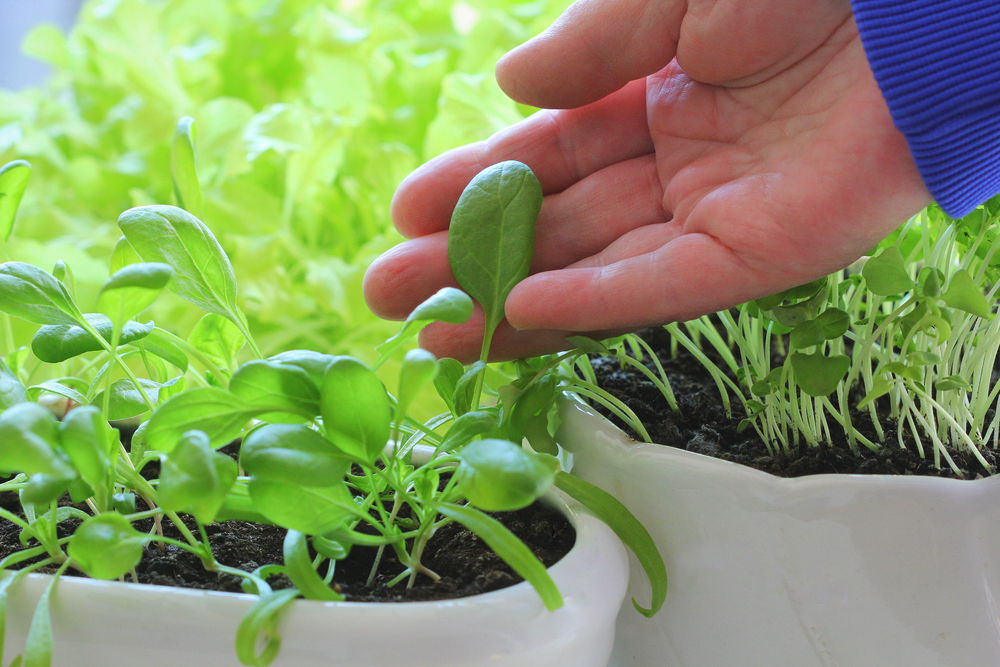
Spinach is a leafy green that can be grown easily indoors, making it an excellent choice for those seeking fresh vegetables year-round. This plant thrives in cool, sunny environments, and it prefers well-drained, fertile soil. Spinach can be harvested at any stage of growth, allowing you to enjoy fresh greens throughout the year. It is a nutritious addition to salads, soups, and smoothies.
Spinach needs to be watered regularly to keep its leaves tender and fresh. It is relatively low-maintenance and can be grown in containers or small garden beds indoors. The plant will benefit from occasional thinning to ensure that the leaves grow large and healthy. Whether added to dishes or used as a garnish, spinach is a valuable houseplant for any home gardener.
Oregano
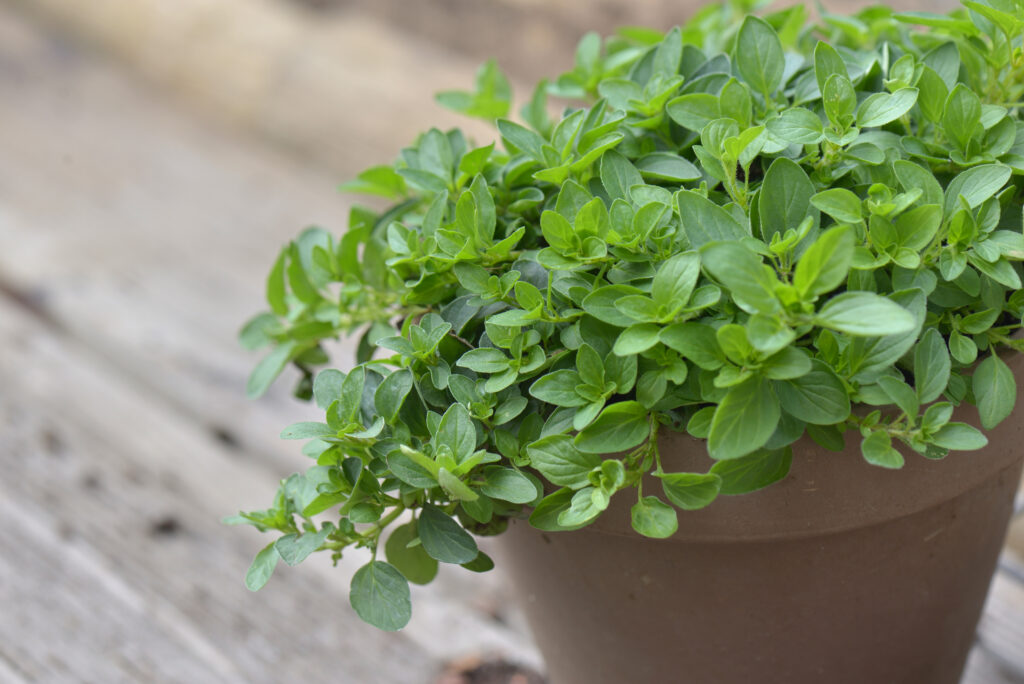
Oregano is a hardy herb that is easy to grow indoors and requires minimal care. It prefers a sunny spot and well-drained soil, making it ideal for windowsill gardening. Oregano is a common herb in Mediterranean dishes and adds a strong, earthy flavor to many savory recipes. The plant’s leaves can be harvested throughout the year, providing fresh flavor when needed.
Oregano does well in slightly dry soil, so it is important to avoid over-watering. The plant can be pruned regularly to promote new growth, ensuring a constant supply of fresh leaves. Oregano can also be dried and stored for later use, making it a versatile herb in your kitchen. With its compact size, it is well-suited for indoor gardening.
Tomatoes
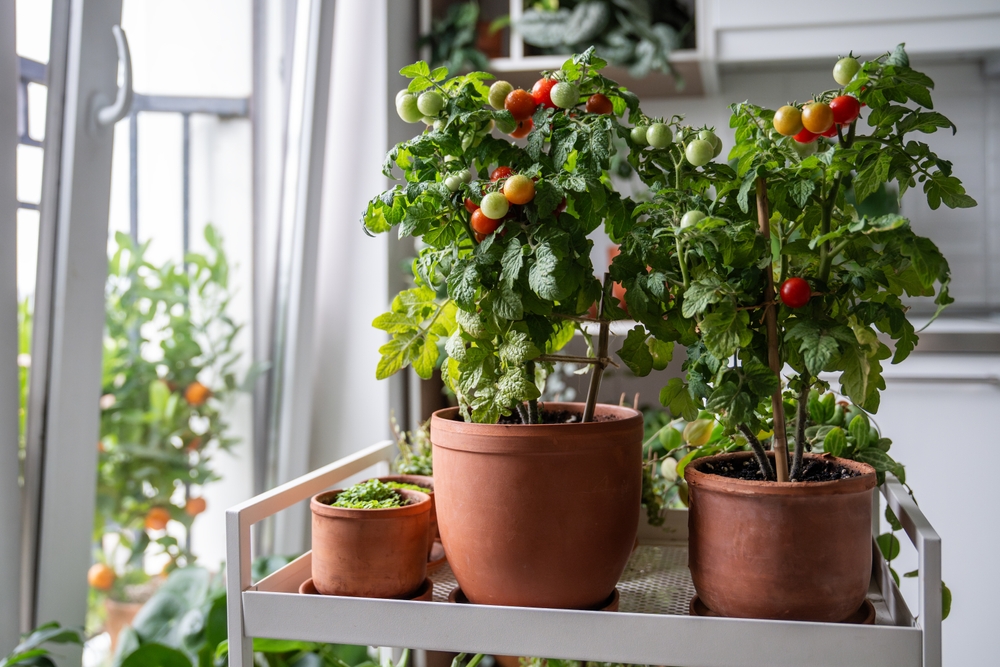
Tomatoes are a popular choice for indoor gardening, especially small varieties that thrive in containers. They need a lot of sunlight, so a sunny windowsill or balcony is ideal for growing them indoors. Cherry and grape tomatoes are particularly suited for this type of gardening and produce small, sweet fruit that is perfect for snacking or adding to meals. Tomatoes can be harvested when ripe, and the plant will continue to produce more fruit.
Tomato plants should be watered regularly but allowed to dry slightly between waterings to prevent root rot. It is important to provide them with support as they grow, such as a small stake or cage. These plants are best grown from seedlings, and they may need occasional pruning to maintain their shape. Indoor tomatoes not only brighten up your home but also provide a steady supply of fresh fruit.
Lemon Balm
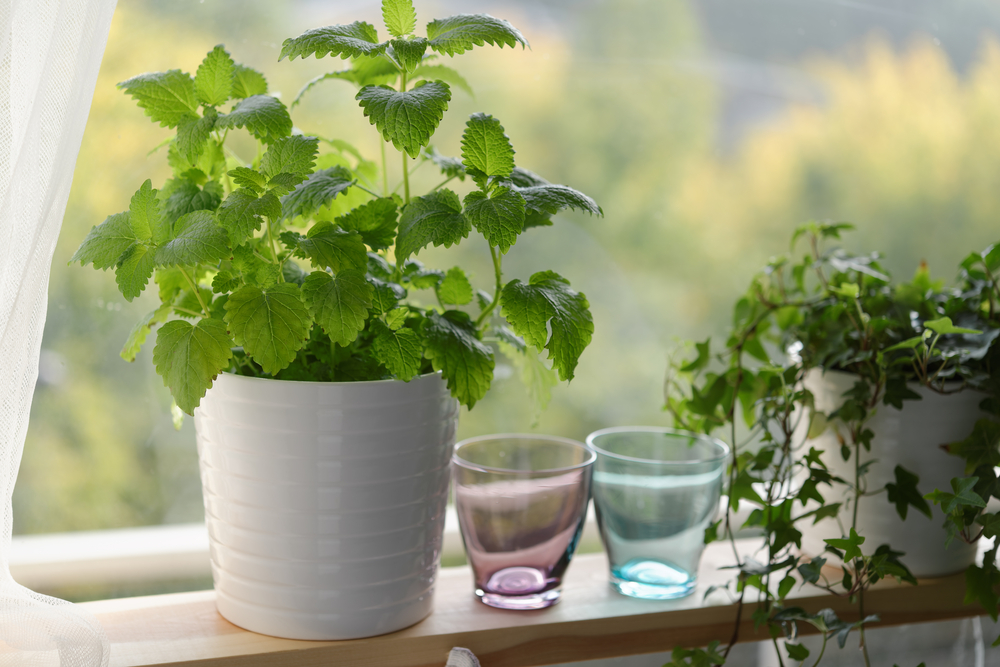
Lemon balm is a fragrant herb known for its citrusy scent, making it an ideal plant for indoor gardens. It grows well in partial sunlight and prefers moist, well-drained soil. The leaves of this plant can be used to make teas, add flavor to dishes, or even be used for aromatic purposes. Lemon balm also has mild medicinal properties, often used for its calming effects.
This herb requires regular watering, especially during hot weather, but it should not be over-watered. It can be grown from seeds or cuttings, and it thrives in a variety of indoor environments. Lemon balm’s fresh leaves are easy to snip and use in cooking or to make refreshing drinks. It is a great choice for anyone looking to grow a plant that smells as good as it tastes.
This article originally appeared on Avocadu.
